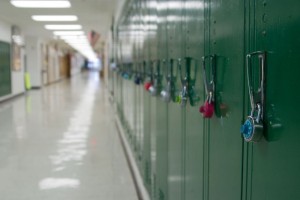Educational Disparities Need Larger Place in Political Discourse

Last Wednesday, shortly after the Department of Education released their “Condition of Education 2016” report, the Brookings Institute hosted a panel to bring public attention to education disparities during this presidential election cycle. Dr. Michael Hansen, senior fellow at Brookings and deputy director of its Brown Center on Education Policy, mentioned that the education issues discussed have primarily been the right’s elimination of Common Core and the left’s reduction of the cost of obtaining a college education. Unfortunately, many nuances about public education have not entered debate or elicited position statements by presidential candidates. And although income inequality has been prominently discussed in this election cycle, educational disparities like racial achievement gaps and achievement gaps by household income level have not been given the same level of attention.
Alia Wong, correspondent for The Atlantic, moderated the hour-long conversation, asking each panelist what they believe to be overlooked factors in educational achievement disparities and to offer some potential solutions.
According to the research, some aspects of the racial achievement gap between black and white students stem from the lack of teacher diversity in the public education. Research shows non-black teachers expect less from black students than black teachers do from the same set of students—perceptions that shape student outcomes and achievement. Yet there are multiple challenges to have a teacher workforce reflective of its student body. Even as the labor force diversifies, the student population grows ever more diverse as well, meaning that representation is a moving target. In addition, it’s hard to get minority teachers into the workforce—and to keep them there. There is a gap between white and nonwhite individuals who decide to become teachers. After going through the many credential-related barriers to teaching, the turnover of minority teachers, who mostly work in disadvantaged settings, is higher. One policy solution might be affirmative action and selective retention of teachers. If those solutions are too difficult to attain, diversifying non-teaching staff at the school, such as the librarians, coaches, and administrators, may be easier. Another school-level solution would be to make space for professional development opportunities for teachers to overcome their unintentional biases against students.
Peggy McLeod, the deputy vice president of education and workforce development at the National Council of La Raza (NCLR), emphasized Latino student outcomes in public education. While there is some promising news—the high school graduation rate is higher than ever before and Hispanics are the largest minority population in college—other numbers further qualify these trends. Although they are making it to college, many Latino students are not graduating in four years and retention is low. McLeod also discussed the shift in American approaches to education that treat multilingualism as an asset instead of attempting to replace first languages with English. This approach shows promise with the White House’s release of a federal policy statement supporting early childhood programs for dual language learners.
Gerard Robinson, resident fellow at the American Enterprise Institute, stressed the importance of honest conversations about racial and intraracial education disparities. Robinson pointed to the Department of Education’s decision in May to disaggregate Asian American and Pacific Islander student outcomes, which has already helped contest the “model minority” myth and treats the over fifty ethnic groups that qualify as Asian as separate identities. This decision has already revealed the racial achievement gap between smaller Asian groups and larger ones—the Vietnamese, Laotian, Hmong, and Tongans have some of the highest dropout rates in the US. These conversations should define disparities consistently, Robinson added, noting the way we refer to our disproportionate contribution to the number of Nobel laureates as “American exceptionalism,” but the disproportionate number of black students who get suspended as a “statistical anomaly.”
Further, he stressed a civil society solution. This sentiment was echoed and expanded upon by DeRay Mckesson, educator, protestor, and activist known for his involvement in the Black Lives Matter movement and for his run for Baltimore mayor. Solutions must come from collaboration with multiple stakeholders instead of reliance on public schools to attempt solutions alone—rather, the community and school culture must be reflected in the solution. Theoretical approaches must cater to the specific environment of the education system in specific geographic neighborhoods. For example, in Baltimore, the education gap has persisted over time, resulting in illiteracy in forty percent of the adult population. These parents would not be able to help their children improve their literacy rates. A specialized solution would be to offer home visiting programs or allotment of a library of books to each child. These approaches, Mckesson emphasized, take into account the demographics of the population and their relationship to public education. As a “third generation reader,” he says, his grandmother was proud to be able to sign her own name.
An underlying theme of the conversation seemed to get at just how interconnected racial education disparities, neighborhoods, and income inequality are in the education problem. Access to quality education is affected not only by having quality schools, but also parents who had access to quality schools and families that can afford enrichment programs for their children. While the income level achievement gap is increasing and the racial achievement gap seems to be decreasing, these many factors are intricately connected. With wealth inequality widening across racial lines, this conclusion finally shows how important it is for candidates to address education policy in a nuanced and thoughtful way.
